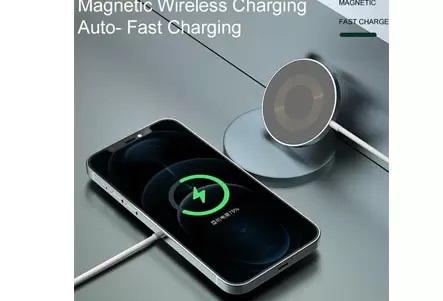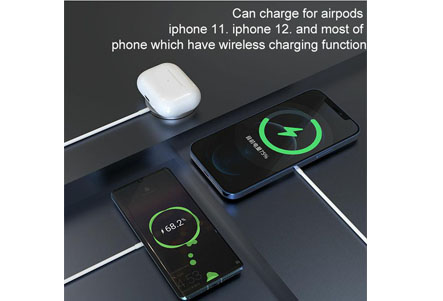How Do Wireless Charger Work?
How do I charge my phone wirelessly?
As the name suggests, wireless charging means that you no longer need to plug a cable into your smartphone to charge it. Simply placing it face up on a special mat or table is enough to start charging your smartphone's battery.
What do I need?
You will need two things. The first is a smartphone that supports wireless charging, or if it's not built-in, you can wear such a phone to add wireless charging.
The second is a wireless charger. These little pucks or mats come in all shapes and sizes, from larger mouse pad-like things to small discs built into furniture.

Is it faster?
In most cases, for smartphones with fast charging technology, wireless charging is slower than charging via cables.
Some wireless chargers are faster than others, while modern high-powered chargers are able to fully charge large battery smartphones in about two hours. They are usually evaluated in terms of wattage (usually with 5W and 10W chargers) or by output amperage (with 5A wireless chargers 1A) compared to a standard 1A USB cable charger (such as the one included with the iPhone 7).
What is "Qi" wireless charging?
There are two competing standards in the wireless charging industry that are designed for portable devices such as smartphones. Most smartphones support the Wireless Power Consortium's Qi and PMA or AirFuel consortium standards, meaning they can be used on most available chargers.
Qi is fast becoming the most popular wireless charging standard and is the one used by Apple for its new iPhone 8 and iPhone X.
How does it work?
Wireless charging uses electromagnetic induction to transfer energy from the charger to a receiver on the back of the phone. The charger uses an induction coil to generate an alternating electromagnetic field, which the receiver coil in the phone converts back into electrical energy to feed into the battery.
They must usually be close to each other and must be correctly aligned with each other, although it is not usually necessary to set the orientation.
Some laptops can also be charged wirelessly, but are often incompatible with the technology and standards used to charge smaller devices.

Do phones get hot?
Yes, most phones and some chargers get slightly warm on the backside when wireless charging is performed.
Smartphones usually get slightly warmer when charging over a cable, so in most cases, the difference is so small that there is nothing to worry about.
Are there any downsides?
The biggest downside is that current technology does not allow for wireless charging through metal. This means that most smartphones that charge wirelessly have plastic or glass backs, the latter of which makes them more fragile.
Although it usually works through thinner plastic cases (depending on the phone and charger), it may also not work through thicker cases.
Will wireless charging become a big thing?
Although wireless charging standards have been in use for years, most devices now support multiple standards, or at least Qi, but wireless charging could become a standard part of smartphones in the near future. Apple's adoption of Qi could make it the primary standard of the future.
The information is provided by the wireless charger supplier.
